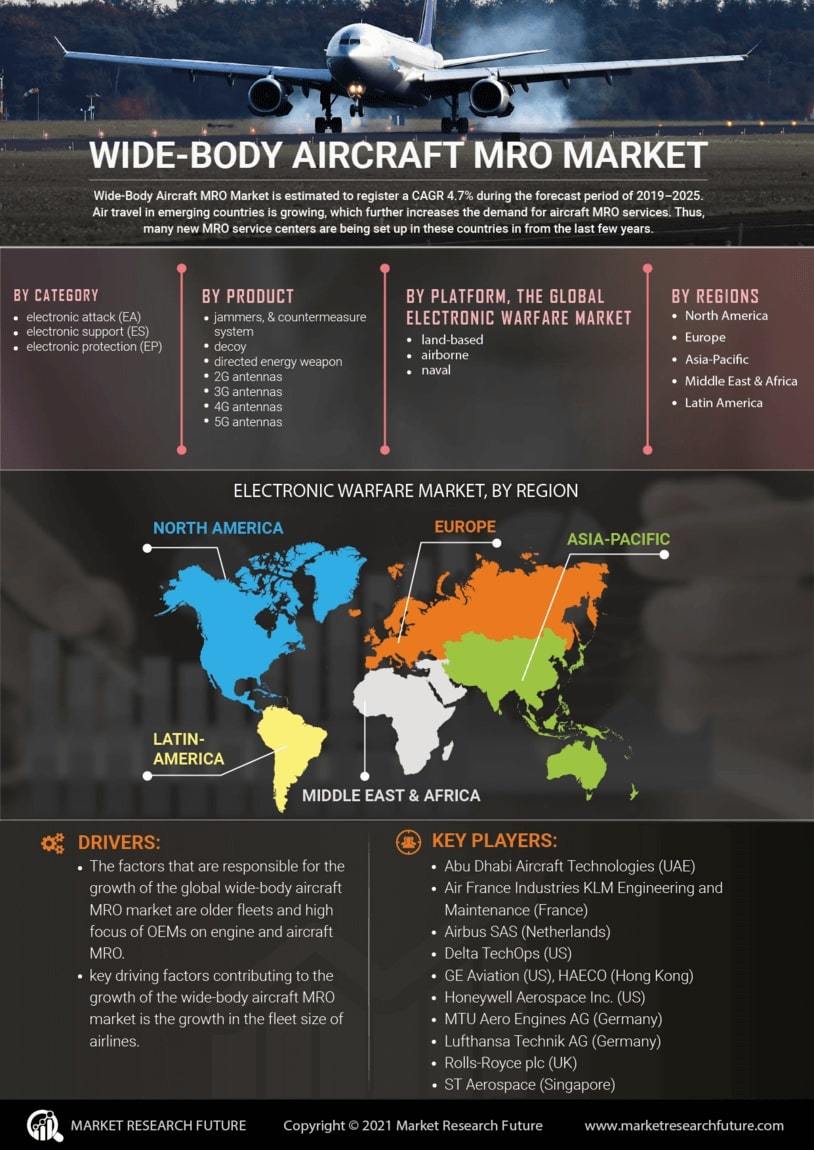Focus on Fleet Modernization
The trend towards fleet modernization is a crucial factor influencing the Wide-body Aircraft MRO Market. Airlines are increasingly investing in newer, more efficient aircraft to reduce operational costs and improve fuel efficiency. This shift necessitates specialized MRO services tailored to the latest aircraft technologies and designs. As older aircraft are retired, the focus on maintaining and servicing modern wide-body aircraft will intensify. Consequently, MRO providers must adapt their capabilities to meet the evolving needs of airlines, which may include training personnel on new technologies and investing in advanced maintenance equipment. This focus on modernization is likely to drive growth in the Wide-body Aircraft MRO Market.
Increasing Air Travel Demand
The rising demand for air travel is a pivotal driver for the Wide-body Aircraft MRO Market. As more airlines expand their fleets to accommodate growing passenger numbers, the need for maintenance, repair, and overhaul services becomes increasingly critical. According to industry forecasts, the number of wide-body aircraft in operation is expected to increase significantly over the next decade, leading to a corresponding rise in MRO activities. This trend suggests that airlines will prioritize efficient maintenance solutions to ensure aircraft availability and safety. Consequently, the Wide-body Aircraft MRO Market is likely to experience robust growth as airlines seek to optimize their operational capabilities and enhance customer satisfaction.
Emerging Markets and Expansion of Airlines
The expansion of airlines in emerging markets is a notable driver for the Wide-body Aircraft MRO Market. As economies grow, there is an increasing demand for air travel, prompting airlines in these regions to expand their fleets. This expansion creates a substantial need for MRO services to ensure the operational readiness of new aircraft. Additionally, as airlines in emerging markets seek to establish competitive advantages, they are likely to invest in high-quality MRO services. This trend indicates a potential growth opportunity for MRO providers, who may need to establish partnerships or facilities in these regions to cater to the rising demand. The expansion of airlines in emerging markets is expected to significantly contribute to the growth of the Wide-body Aircraft MRO Market.
Regulatory Compliance and Safety Standards
Stringent regulatory requirements and safety standards are significant drivers of the Wide-body Aircraft MRO Market. Regulatory bodies impose strict guidelines to ensure the safety and airworthiness of aircraft, necessitating regular maintenance and inspections. Airlines must comply with these regulations to avoid penalties and ensure passenger safety, which in turn fuels demand for MRO services. The increasing complexity of aircraft systems and components further emphasizes the need for specialized maintenance expertise. As regulations evolve, the Wide-body Aircraft MRO Market is expected to adapt, leading to increased investment in compliance-related MRO services and technologies.
Technological Advancements in MRO Services
Technological innovations are transforming the landscape of the Wide-body Aircraft MRO Market. The integration of advanced technologies such as artificial intelligence, big data analytics, and the Internet of Things is enhancing maintenance processes and improving operational efficiency. These technologies enable predictive maintenance, which allows airlines to anticipate potential issues before they arise, thereby reducing downtime and maintenance costs. As a result, the demand for technologically advanced MRO services is expected to surge, driving growth in the Wide-body Aircraft MRO Market. Furthermore, the adoption of digital tools for inventory management and scheduling is likely to streamline operations, making MRO services more efficient and cost-effective.


















Leave a Comment